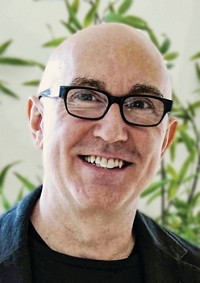Advertisement
Grab your lab coat. Let's get started
Welcome!
Welcome!
Create an account below to get 6 C&EN articles per month, receive newsletters and more - all free.
It seems this is your first time logging in online. Please enter the following information to continue.
As an ACS member you automatically get access to this site. All we need is few more details to create your reading experience.
Not you? Sign in with a different account.
Not you? Sign in with a different account.
ERROR 1
ERROR 1
ERROR 2
ERROR 2
ERROR 2
ERROR 2
ERROR 2
Password and Confirm password must match.
If you have an ACS member number, please enter it here so we can link this account to your membership. (optional)
ERROR 2
ACS values your privacy. By submitting your information, you are gaining access to C&EN and subscribing to our weekly newsletter. We use the information you provide to make your reading experience better, and we will never sell your data to third party members.
People
Jeremy M. Berg
Learning of zinc finger proteins helped NIGMS's new director focus his research.
by Susan R. Morrissey
May 17, 2004
| A version of this story appeared in
Volume 82, Issue 20
One of the biggest challenges for scientists starting their academic careers is choosing a research focus. For Jeremy M. Berg, director of the National Institute of General Medical Sciences at the National Institutes of Health, the choice was a matter of combining his synthetic chemistry training with his budding interest in biology.
Berg–who has only recently taken on the charge of heading the NIH institute that funds the most chemistry–started his professional academic career at Johns Hopkins University in 1986. His research has focused on the structural and functional roles of metal ions, especially zinc, in proteins.
Years after writing his first grant in the area of zinc finger proteins, Berg is still unlocking keys to metal binding in proteins. But, he acknowledges, he owes his research direction to his postdoctoral studies of DNA-binding proteins.
"I had done my Ph.D. with Dick Holm at Harvard University on biologically motivated, but basically fairly hard-core inorganic chemistry. The great majority of my time was spent making organic ligands and doing synthesis.
"Then, as a postdoc, I decided I really wanted to do something much more biological and started working on a DNA-binding protein. I had always been interested in structure, but I hadn't taken much biology. It was a complete shift and I was learning as I was going.
"Following my postdoc, I had a faculty position in the chemistry department at Hopkins. The question then was should I go back to inorganic chemistry, where I had a Ph.D.'s worth of training, or stay in the DNA-binding protein business, which I had been doing for a year or so and was still very much developing?
"It was at that time that a paper appeared on the first of the zinc finger proteins to be characterized, so that's what I decided to write my first grant on. In terms of my direction in research, this was definitely an Aha! moment."







Join the conversation
Contact the reporter
Submit a Letter to the Editor for publication
Engage with us on Twitter